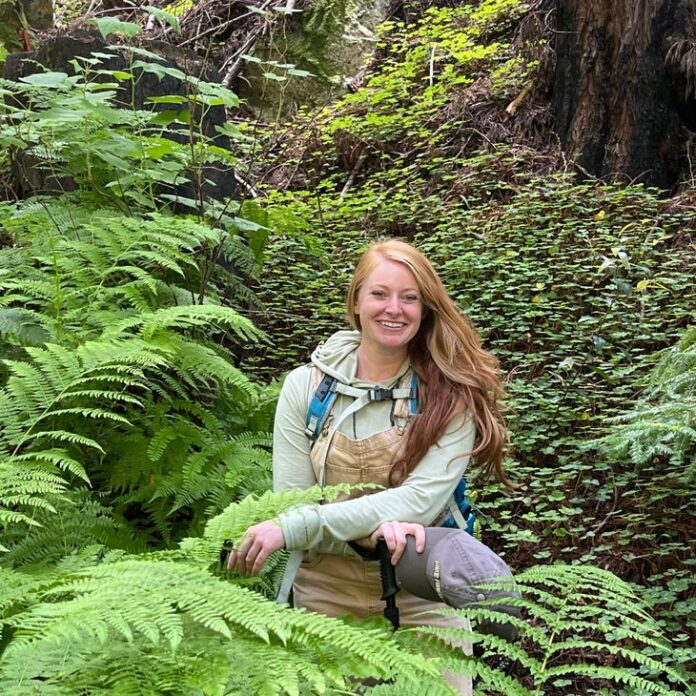“], “filter”: { “nextExceptions”: “img, blockquote, div”, “nextContainsExceptions”: “img, blockquote, a.btn, a.o-button”} }”>
California is huge. But it’s the diverse landscapes, not just size, that make California so attractive to anyone who loves the outdoors. The short list: nine national parks (more than any other state); 840 miles of coastline with more than 1,150 public access points; and 12 distinct regions, each with its own flavor. From desert terrain to coastal mountains that plunge into the Pacific Ocean, from fertile valleys to the alpine wonderland of the Sierra Nevada, California is really one giant playground. I’m all about playing outside, so naturally I was super excited for a midsummer road trip from San Francisco, down the Central Coast, through the Central Valley, and into Kings Canyon.
Ask any of my friends and they’ll tell you, “Meg has a lot of hobbies.” No argument here. I like to play. Hiking, biking, paddling, diving, aerial arts—if it’s outside and I’m moving my body, then I’m in. California, specifically the eastern Sierra, has been my personal playground for more than seven years. I can do everything I love here. All of my mountain hobbies are accessible from my front door—literally. And the activities I enjoy that aren’t mountain related? I’m just a road trip away from California’s coast, big cities, the west side of the Sierra Nevada and all the fun that comes with exploring new places. Wherever you’re from, California might just be the perfect playground for you too. For the ultimate mix of coast, mountain, cities big and small, creative culture, and local food and drink, try this itinerary. I just did it, and here’s what I found.
Stop 1: San Francisco
San Francisco will make a city person out of anyone. It has all the perks of a world-class city, plus world-class access to the outdoors. That’s why I have a soft spot for this city—and why I started my road trip there. Here’s what I recommend.
Paddle the San Francisco Bay.
Views of the bay from the shore are stunning, but to truly experience San Francisco Bay, you have to get out on the water. My trusty paddleboard made the trip, so I decided to put her seaworthiness to the test with a morning SUP sesh in the bay. Launch from McCovey Cove, near Oracle Park, home of the San Francisco Giants, for views of downtown San Francisco and Treasure Island. This launch area is known for having calm waters, but you can tip the scales in your favor by getting out in the morning before afternoon winds pick up. I wasn’t the only one enjoying the great weather and calm morning waters—I enjoyed a visit from a curious harbor seal while I was out and about. If you don’t bring your board with you everywhere in summer like I do, you can rent a kayak instead. Or, if you’re visiting Friday to Monday, opt for a 1.5-hour guided paddle with City Kayak.
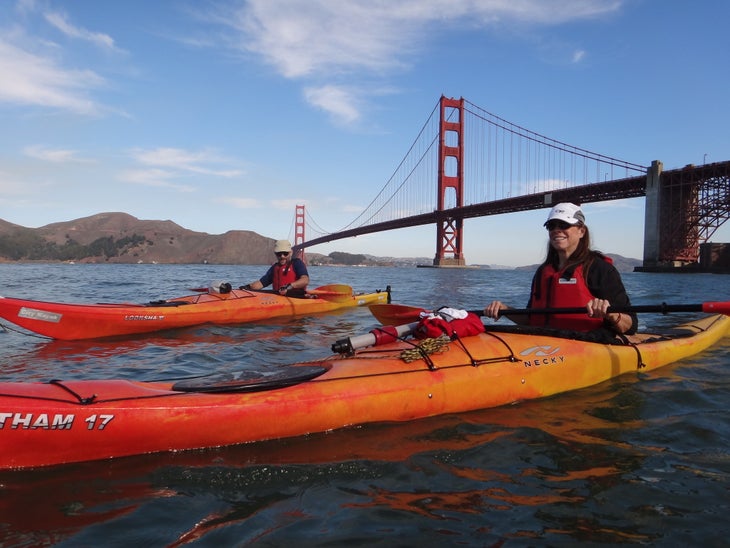
Explore nature art around the city.
To see just how intertwined San Francisco is with nature, head to Wood Line in the Presidio to check out the nature art constructed by Andy Goldsworthy, whose work is featured around the city. Want to get your hands dirty with your own nature art experience? Sign up for a wild clay class at Artillery Ceramics. This local pottery studio offers clay foraging workshops at local nature reserves. Learn about gathering clay and then shape it into your own masterpiece right on the beach.
Bike the Golden Gate Bridge.
Touristy? Yes, and totally worth doing. Rent a bike and pedal all or part of the bridge. From the Presidio to the Marin County line and back is about 3.5 miles. Weekdays before 3 p.m., the pedestrian path is open to both bikes and foot traffic. After 3 p.m. and on weekends, the west side pedestrian path becomes bikes only, which makes navigating easier if you’re like me and not used to biking in cities.
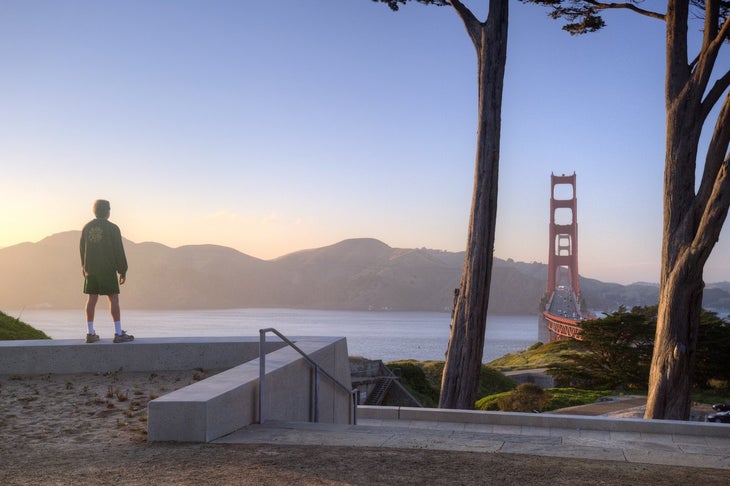
Catch classic San Francisco sunset views.
Every San Francisco local has their favorite sunset spot. Lucky for me (and you), a local friend was willing to share hers. For prime sunset views of the Golden Gate Bridge, hike the Batteries to Bluffs Trail on the west side of the Presidio. This short but steep 2.3-mile hike runs along the cliff and offers multiple lookout points to see the bay, bridge, and Point Bonita Lighthouse across the water. On your way back to the trailhead, keep an eye out for banana slugs. These bright yellow slugs like to hang out on the stairs that lead down to the water at dusk.
Travel Tip: Book a room at the Lodge at the Presidio. This boutique hotel is the closest lodging to the Golden Gate Bridge in San Francisco, so you’ll be right in the heart of the action with lots of walkable access to nearby restaurants. Venturing beyond walking distance? Park your car and cruise the city using Waymo—the all-electric self-driving cabs recently piloted in the city.
Stop 2: Monterey
Take the scenic route along Highway 1 from San Francisco to explore more of the Central Coast. About three hours south of the Bay Area by car, Monterey gives a more relaxed city vibe, complete with easy beach access, delicious seaside eats, and a rad diving community.
Dive at the Breakwater.
Monterey is famous for its kelp forests and the unique marine life that thrives in that ecosystem, like sea otters, spider crabs, nudibranchs, massive sea stars, and sea lions. As a longtime diver, I’ve had this area on my list for ages, so I was stoked to spend the morning underwater with divemaster Phil from Aquarius Dive Shop. Conditions were right for a dive at the iconic Breakwater site off San Carlos Beach, where we got an up-close look at the kelp forests and a visit from a curious sea lion. Drifting through the towering kelp—which can grow to heights of 175 feet—truly felt like another world. As a diver who prides herself on maintaining good trim (horizontal orientation underwater that’s considered good form in diving), I rarely find myself looking up underwater. Thankfully, my divemaster didn’t let me miss the chance to look up and see the sunlight streaming down between the swaying kelp above me—a truly unique perspective of an already awe-inspiring ecosystem. Not a diver? The Monterey Bay Aquarium has a massive two-story kelp forest exhibit that gives visitors an underwater experience without actually going underwater.
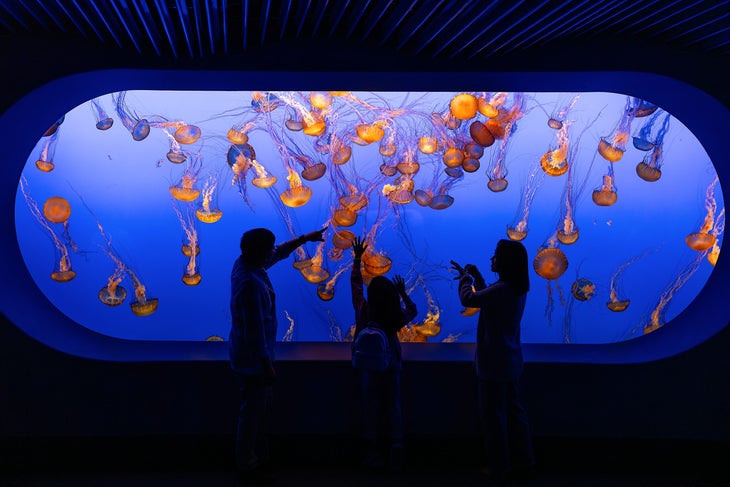
Hang at Dust Bowl Brewing in the Wharf.
When your divemaster tells you to go to a local watering hole for fish tacos and a beer, you go. Grab dinner at Wedo’s Tacos food truck, which is parked at the Dust Bowl Brewing Company Tap Depot. The recommended fish tacos with a Taco Truck Lager (a Dust Bowl classic) did not disappoint. If you’re up for a second beer, Phil says the Therapist Imperial IPA is his dessert of choice.

Visit a local climbing gym, but make it aerial arts.
California’s sunshine makes it easy to spend all your time outdoors. But whenever I need a break from the sun, I love checking out local aerial arts classes. Sanctuary Climbing & Fitness, on the north end of the Monterey Peninsula, offers lyra and silks classes right in the climbing gym, creating a great atmosphere and community feel. Of course, climbing is also an option here if that’s more your vibe.
Travel Tip: In a place like Monterey, beachfront accommodations are the way to go. Book a room at Monterey Tides (soon to debut as Monterey Beach Hotel later this year after some exciting renovations) for a low-key spot with great beach access to relax post-adventure.
Stop 3: Big Sur
With dramatic oceanside bluffs, redwood-filled canyons, and scenic views in every direction, Big Sur has been on my list for ages, and this classic coastal drive definitely lived up to the hype.
Drive scenic Highway 1.
This iconic stretch of highway on the California coast just north of Big Sur recently reopened, which means visitors could access most of Big Sur again while I was in the area. (As of July 2024, repairs are still in progress on the southern stretch of the highway through Big Sur 2.1 miles north of Lucia to 16.8 miles south of Dolan Point.) Take your time driving this unbelievably scenic stretch of coastline. Trust me, you’ll want to have plenty of time for stops to take pictures and marvel at the landscape.
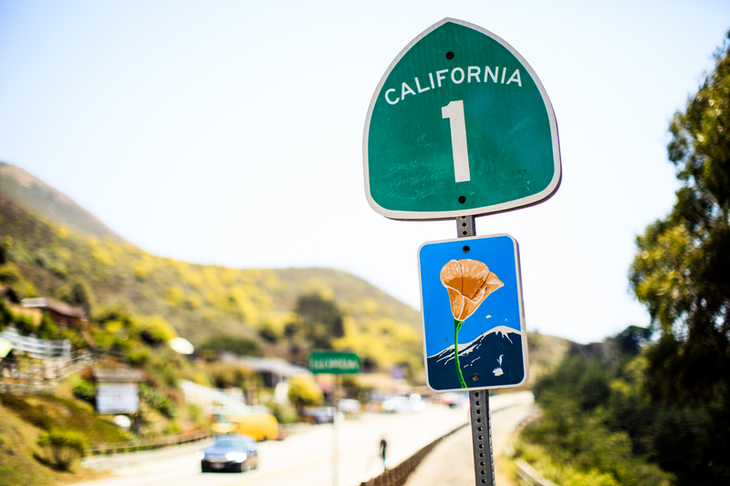
Go on a guided hike.
As someone who hikes often and feels comfortable in the outdoors, I don’t typically have guided hikes on my radar. But if you have limited time to explore, going out with a guide can help maximize your day. Depending on the time of year, a local guide can help you fully experience Big Sur by showing you all the seasonal magic, like mushroom foraging in winter, monarch butterflies migrating through the area in fall, and wildflowers blooming in spring. For summertime, my guide Patrice had California condors and ladybugs on his mind. A Big Sur local since 1985, Patrice knows every canyon along the coast and has a lifetime of stories to share. As we drove Highway 1 toward Tan Bark Trail, he pulled over to point out a rocky crag where he’s often spotted condors. The population has grown over the years thanks to a local breeding and reintroduction program. On the trail, we plucked and ate thimbleberries right off the bushes, tasted tender wood sorrel growing on the forest floor, and peeked under logs and brush to find thousands of ladybugs that stop over in Big Sur on their annual migration. After a magical hike, grab drinks with a view at the outdoor terrace at Ventana Big Sur, followed by a bite at one of Big Sur’s newest restaurants, The Village.
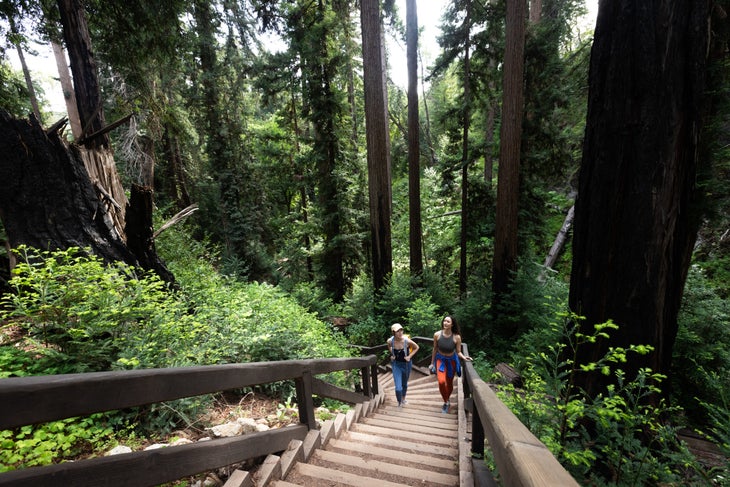
Travel Tip: California’s wild spaces can be fragile and at risk of damage from human activity. That fact is especially apparent in Big Sur. When you visit, tread lightly to help protect this delicate coastal ecosystem.
Stop 4: Fresno and Sequoia & Kings Canyon National Parks
I always have a hard time saying goodbye to the California coast, but hitting the road is easier when exciting adventures await just three hours inland. With access to three national parks—Yosemite, Kings Canyon, and Sequoia—all within a 90-minute drive, Fresno might just be one of the greatest gateway cities of all time. Set up base camp in the Fresno area for access to adventures in town and outdoors.
Head underground to escape the heat.
Summertime in the Central Valley is all about sunshine. When temperatures soar, escape the heat at one of Fresno’s most unique spots: Forestiere Underground Gardens. This subterranean fruit garden was a labor of love by one of Fresno’s early farmers, who tunneled below the hardpan soil to find respite from the heat for both himself and his beloved citrus trees. As a hobby gardener currently contending with high desert heat in my own garden, I can appreciate the ingenuity. The tour of the underground garden was filled with fun tidbits about this creative farming solution and the history of this region as a hub for farming in California.
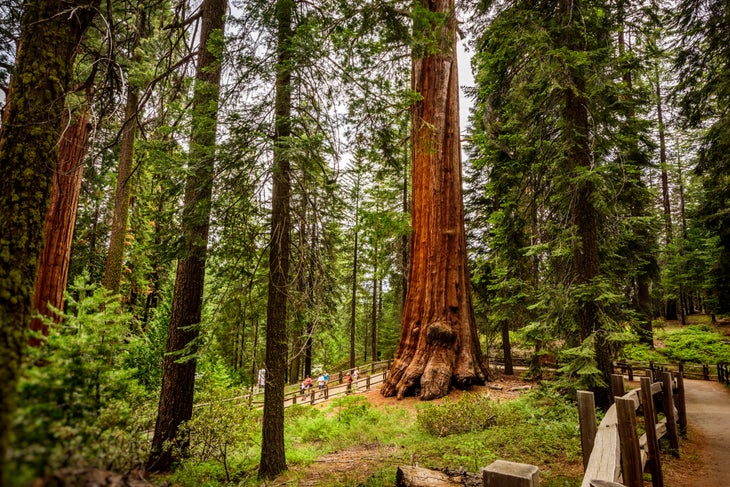
Grab snacks at local fruit stands.
The California sun is exactly why Fresno and the Central Valley are known for their abundance of produce. More than half of the country’s fruit and the majority of tree nuts are grown in this region. Visiting during summer means access to the freshest fruit you can find. Stop along the Fresno County Fruit Trail or hit the Old Town Clovis Farmers Market to stock up on fresh produce to take along on the day’s outdoor adventures.
Day trip to Sequoia & Kings Canyon National Parks (SEKI).
I’ve spent a ton of time in Yosemite but only ever hiked into Sequoia & Kings Canyon from the east side of the Sierra, so I couldn’t miss the opportunity to check out the west side.
🥾 Visit the largest trees in the world. I’ve seen giant sequoia trees in Yosemite National Park, but nothing compares to the massive sequoia groves in SEKI. The Kings Canyon Scenic Byway (Highway 180 into the Cedar Grove area of Kings Canyon) reopened in June 2024, so driving this 50-mile scenic route was the first order of business. Stop in Grant Grove to see the General Grant Tree, the second largest tree in the world by trunk volume at 46,608 cubic feet. (I got a chance to see the largest—the General Sherman Tree, measuring 52,508 cubic feet—when I drove south toward Giant Forest later in the day.) I am decidedly not a math person, so the stats didn’t really compute until I saw these towering trees in person. Continue on a choose-your-own-adventure drive, stopping at waterfalls, impressive rock formations, and overlooks with views of Kings Canyon and the Kings River.
🥾 Go for a hike.When you’re ready to explore on foot, hike the scenic 1.3-mile Crescent Meadow Loop. The trail takes you through a vibrant green meadow filled with wildflowers and surrounded by giant sequoia trees on all sides. This area is a hub to access lots of trails in the SEKI wilderness, including the famous High Sierra Trail, which spans nearly 70 miles one way and connects SEKI to Whitney Portal on the east side of the Sierra. If you have more time, consider a longer hike to explore more of the area, or plan ahead to get backpacking permits for a multiday trip.
Travel Tip: Time your day to make it back to the Fresno area for dinner at Trelio Food & Wine in Old Town Clovis. This local eatery serves a five-course prix fixe menu featuring all of the local food the Central Valley is famous for. The menu changes daily based on the ingredients available from local markets, farms, and foragers.
Visit California is a nonprofit organization with a mission to develop and maintain marketing programs in partnership with the state’s travel industry that keep California top-of-mind as a premier travel destination. For more information about Visit California and for a free California Official State Visitor’s Guide, go to visitcalifornia.com.


